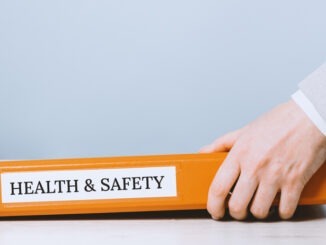
As the health and safety sector continues to diversify, here are three trends in wearable health and safety technology we expect to see this year
CREDIT: This is an edited version of an article that originally appeared on HSE Network
A wearable piece of technology is, as the name suggests, a specialised piece of tech that you wear somewhere on your body. For workplaces that require health and safety products, there have been advances in wearable technology that can be used to keep employees safe. Here are three products that are leading the way.
Hard helmet sensors
Health and safety officers service a number of fields and some – such as construction or certain production companies – can require hard hats. In these scenarios, both health and safety professionals and the main employees must wear specialised hard hats to reduce the risk of head injuries from falling debris and various other hazards. In the old days, hard hats were just hard plastic shells with foam interiors; however, they’re much different nowadays.
Of course, modern hard hats still protect against debris; proximity and impact sensors can read how close employees get to being struck, and how hard they’re struck when an accident does occur; this is vital information in a number of workplace accidents. Today’s hard hats now also use sensors to ensure that employees aren’t becoming dangerously hot, or experiencing serious health problems.
Helmets like these are state-of-the-art, and they’re not available at every work site, but they are growing in popularity due to the benefits they provide in both preventing injuries and assessing the damage when injuries occur.
Biometric data collection
Biometric data is information gathered from your body. Smart watches and ‘phone apps, are broadening employers’ understanding of their employees – they can read things such as an employee’s blood pressure when they get dizzy or tired during their shift, when their pulse rate or temperature rises, and even their breathing rate.
Whilst the necessity of this type of tech can be argued, it can be lifesaving in certain situations. Let’s say you work in construction and you’re building a high-rise. Your smartwatch picks up that you are dizzy, and a health and safety professional immediately calls you down from your post to meet with them. That could prevent you from falling seriously harming yourself. Or maybe you’re working very long shifts driving a forklift. After a few weeks, your employer notices that, at the eleventh hour of a 14-hour shift, you start dozing off – at which point, you’re unsafe, and so are your co-workers. A responsible employer will start making adjustments immediately to avoid letting anyone getting harmed.
Biometric data is also capable of helping employers see if they’re pushing their employees too hard. If they notice that a large number of employees are experiencing increased heart rates or breathing rates at certain periods, they can identify what is triggering this and work to prevent an injury or illness. Biometric data can be collected for genuinely good reasons, and it’s important that employees and employers alike understand how to use this new technology to ensure that everyone works as safely as possible.
Augmented reality training
Thanks to modern tech, health and safety training programmes can now provide augmented reality sessons that simulate worst-case scenarios to help professionals make the right decisions when they’re out in the real world. This not only increases the professional’s confidence in, and understanding of, specific high-stress situations, it also lowers the risk of companies losing large sums due to accidents, neglected equipment, and more.
Wearable technology can have a major impact on your business and help keep your employees safe.


Be the first to comment